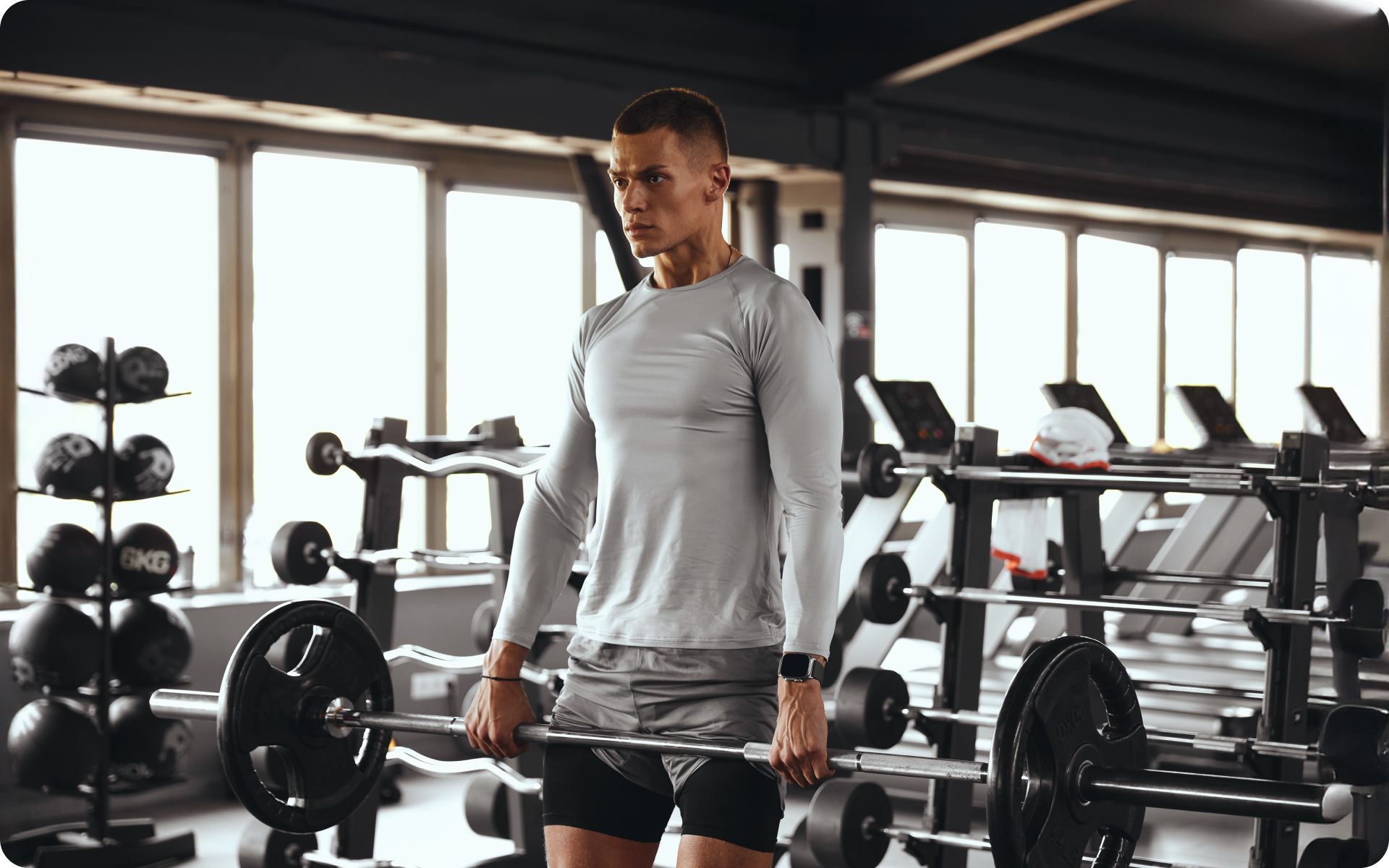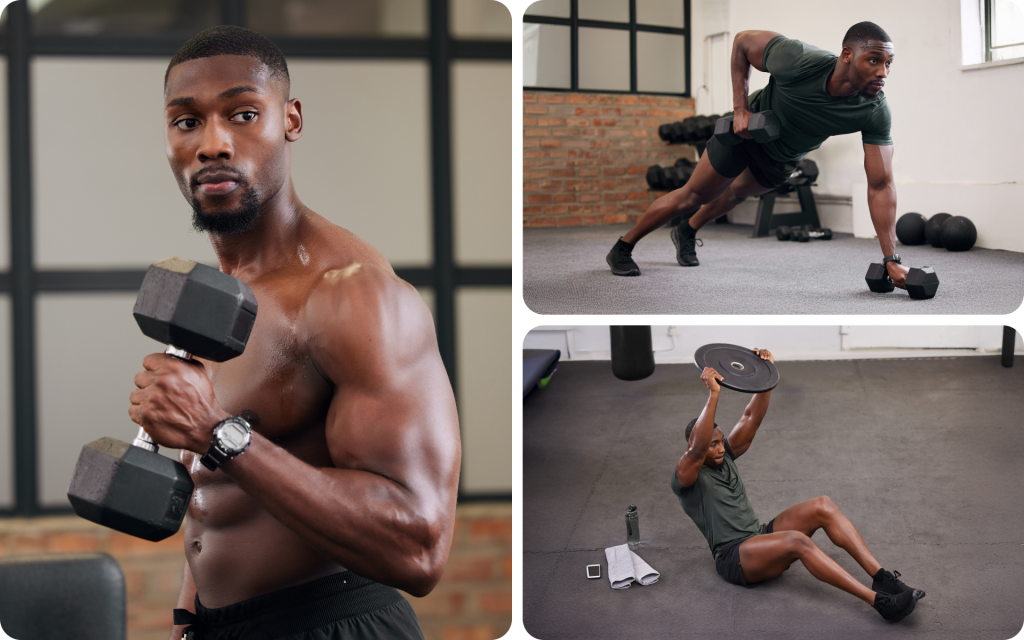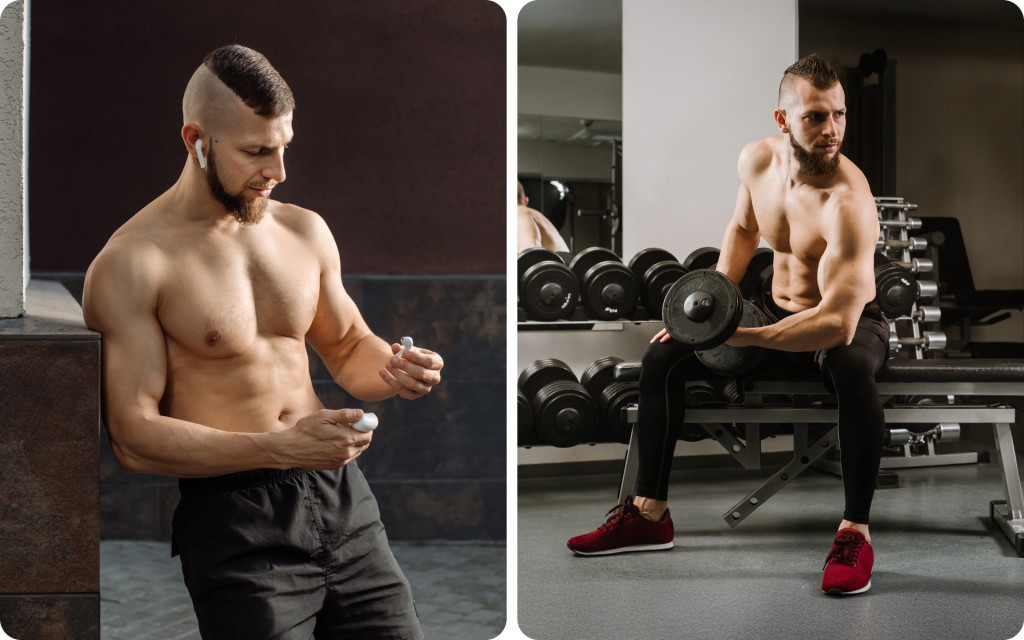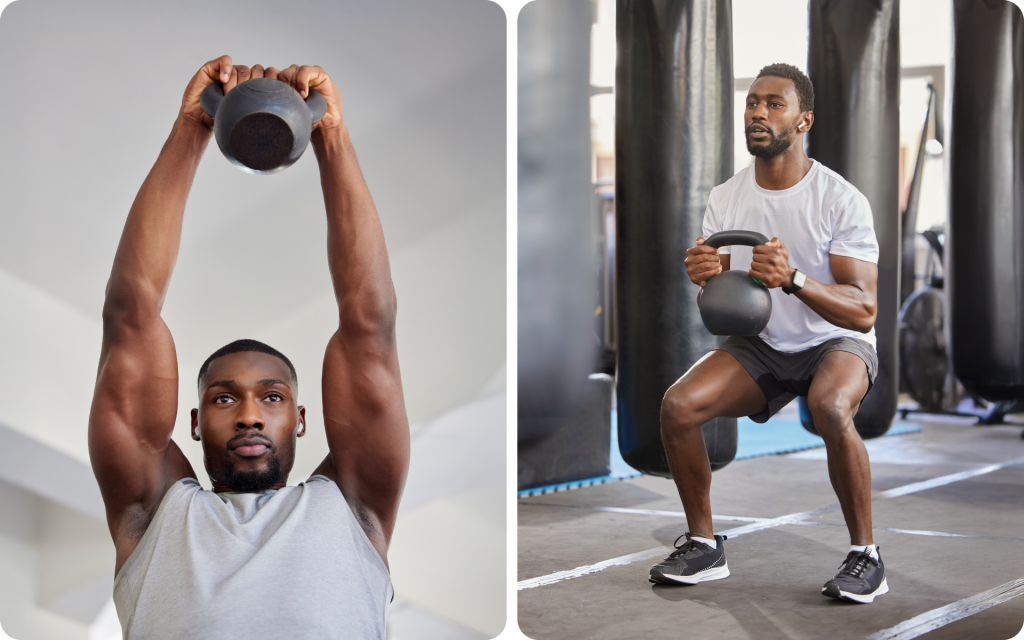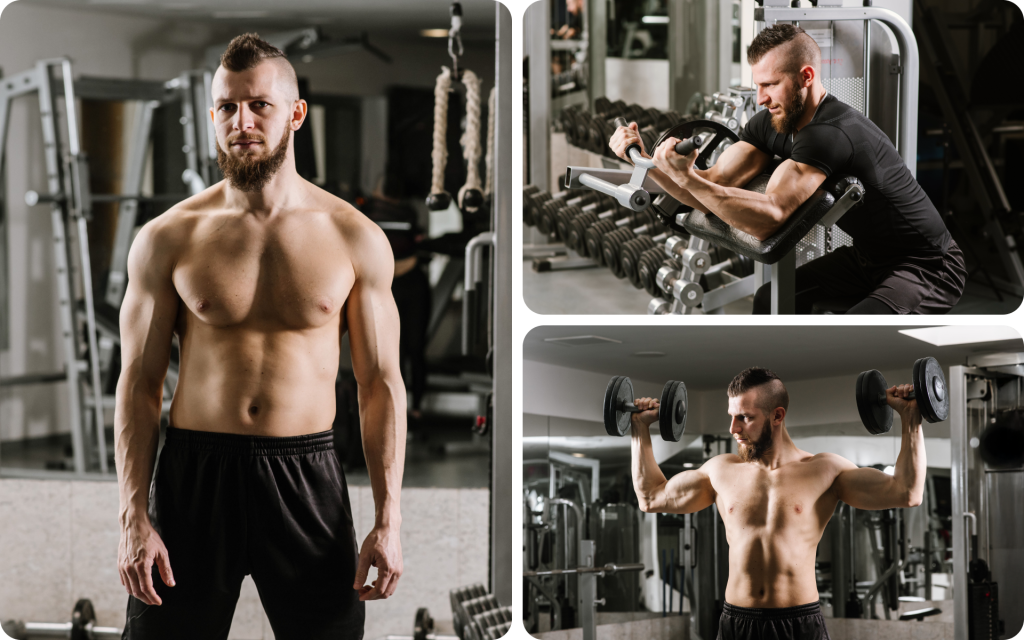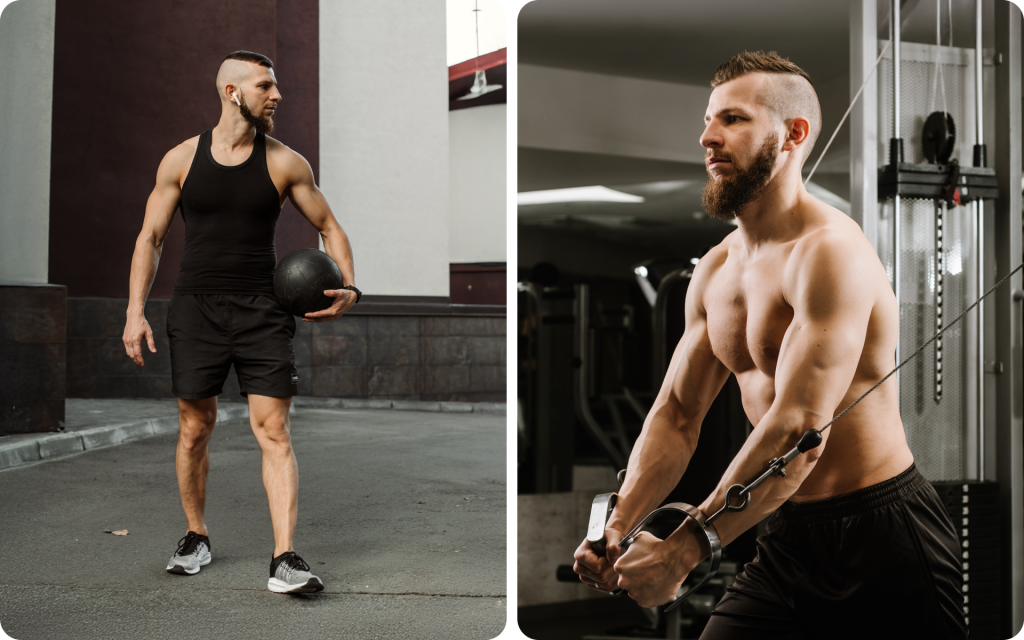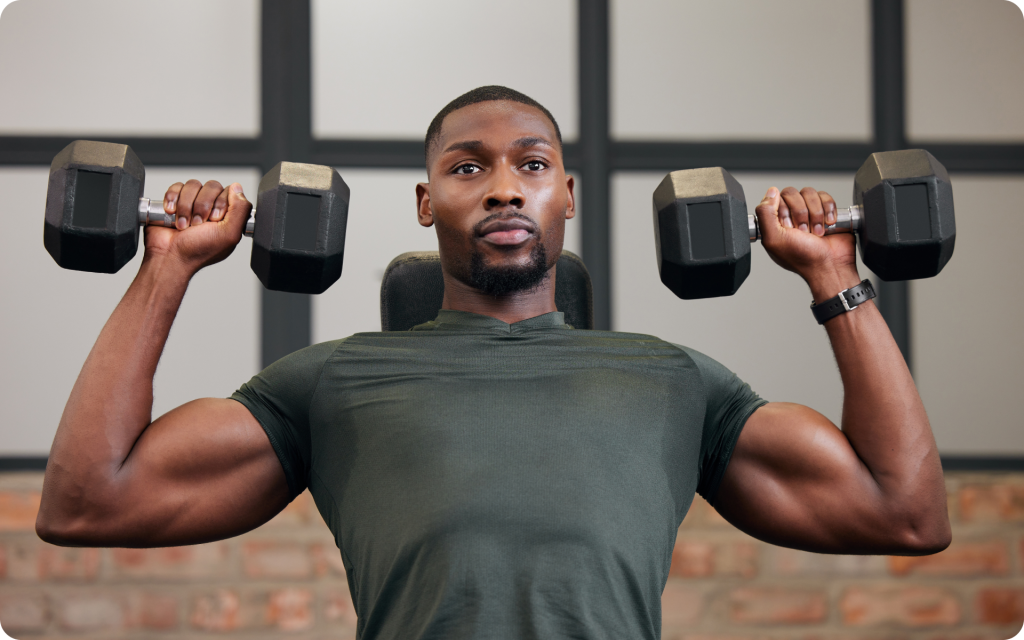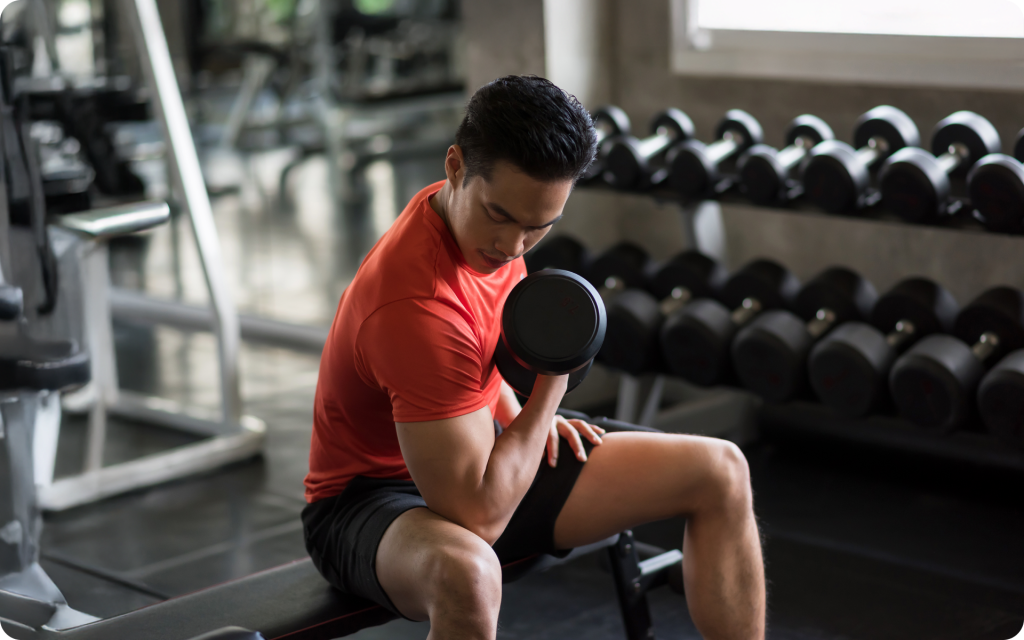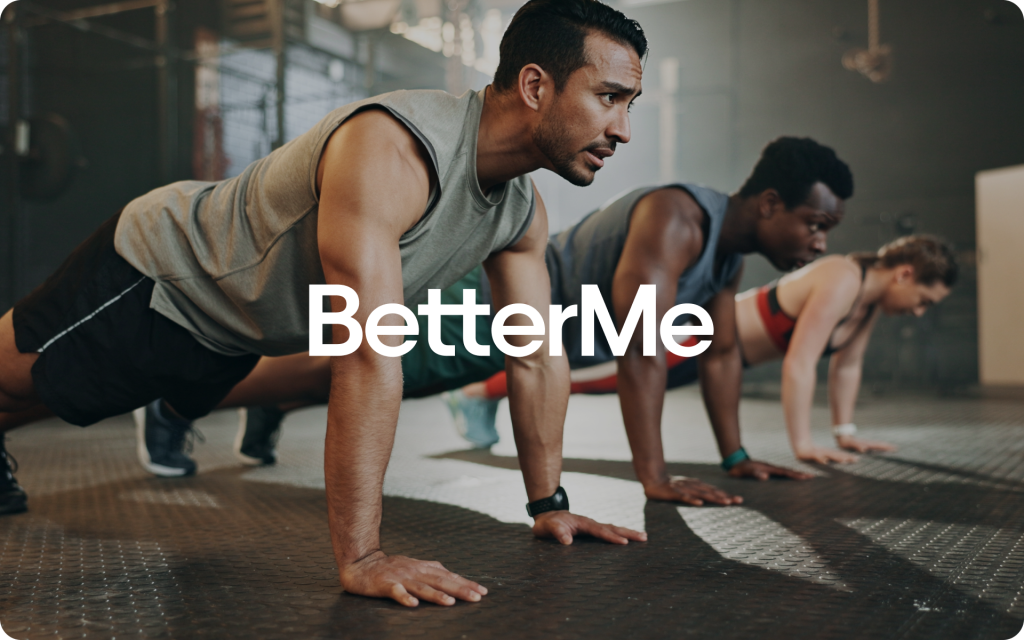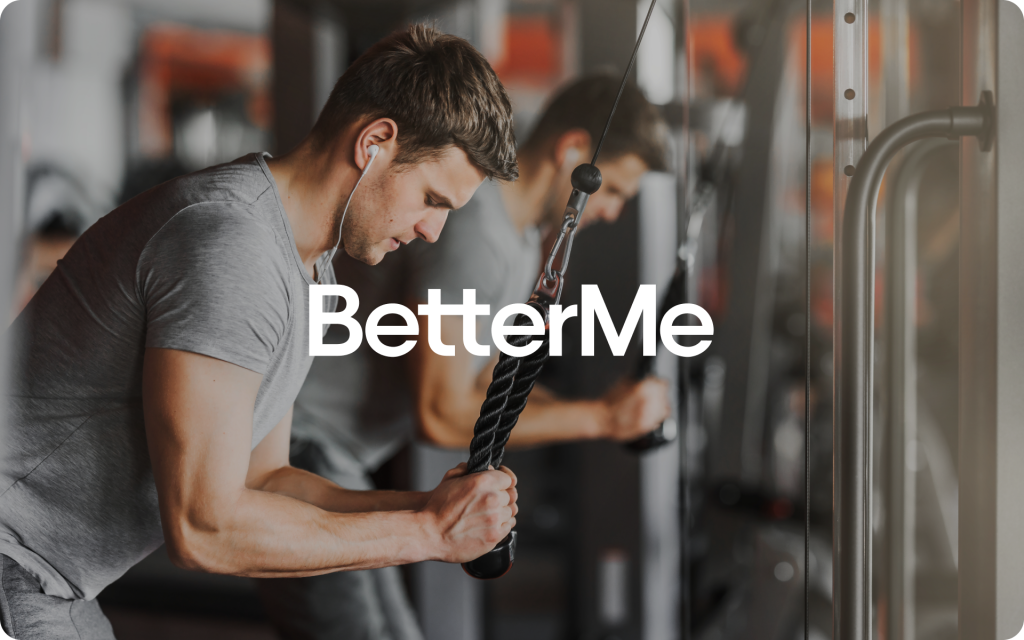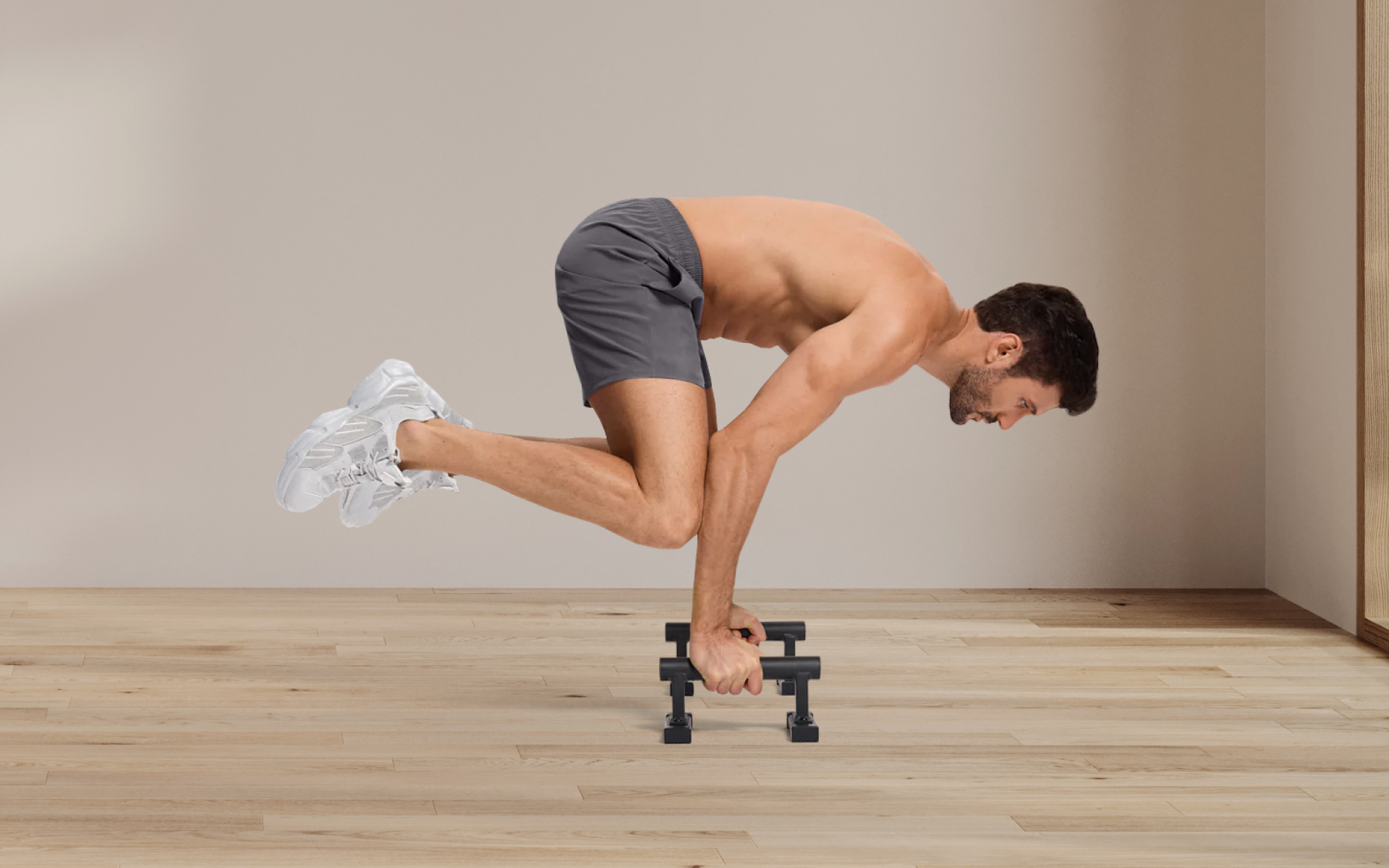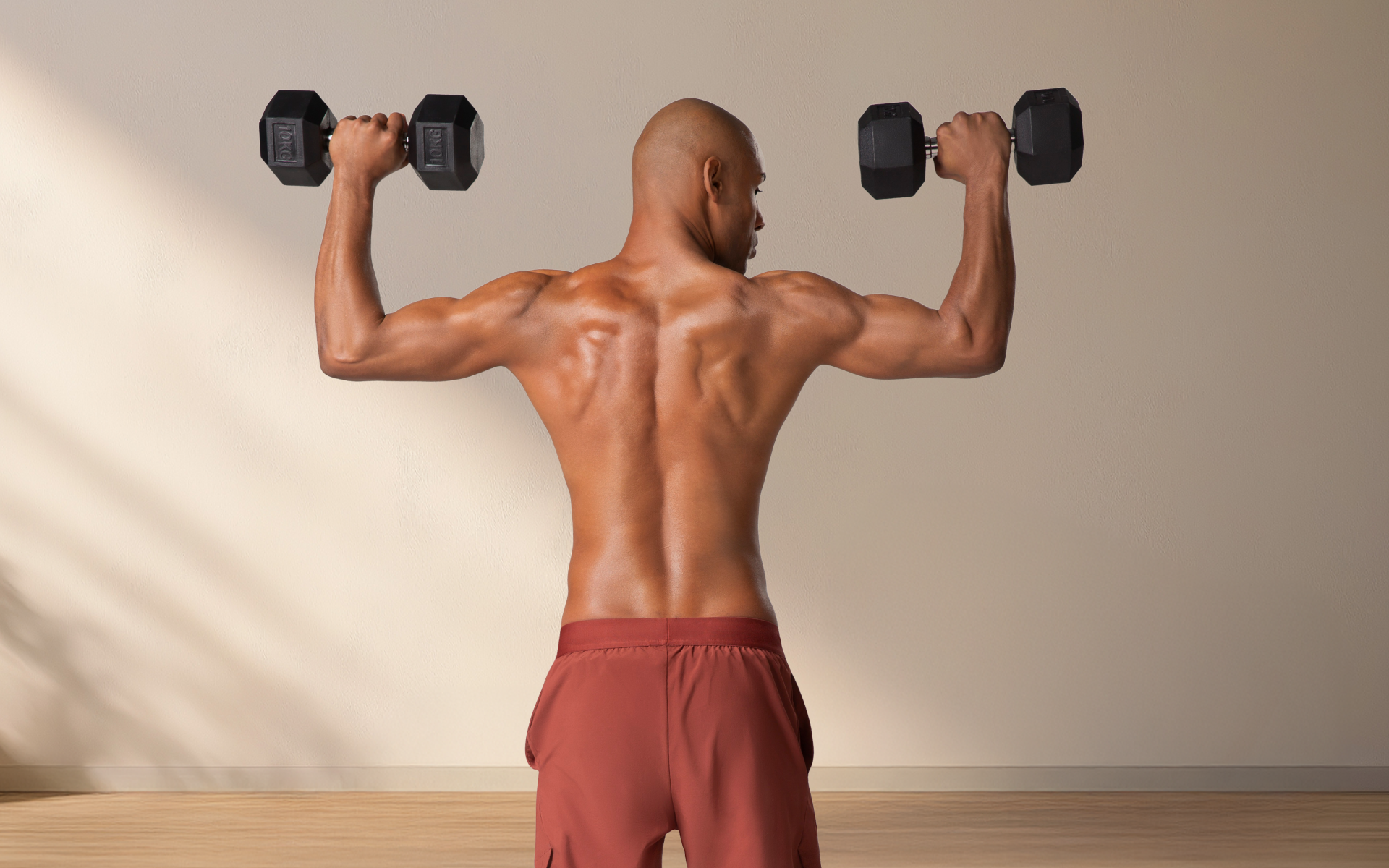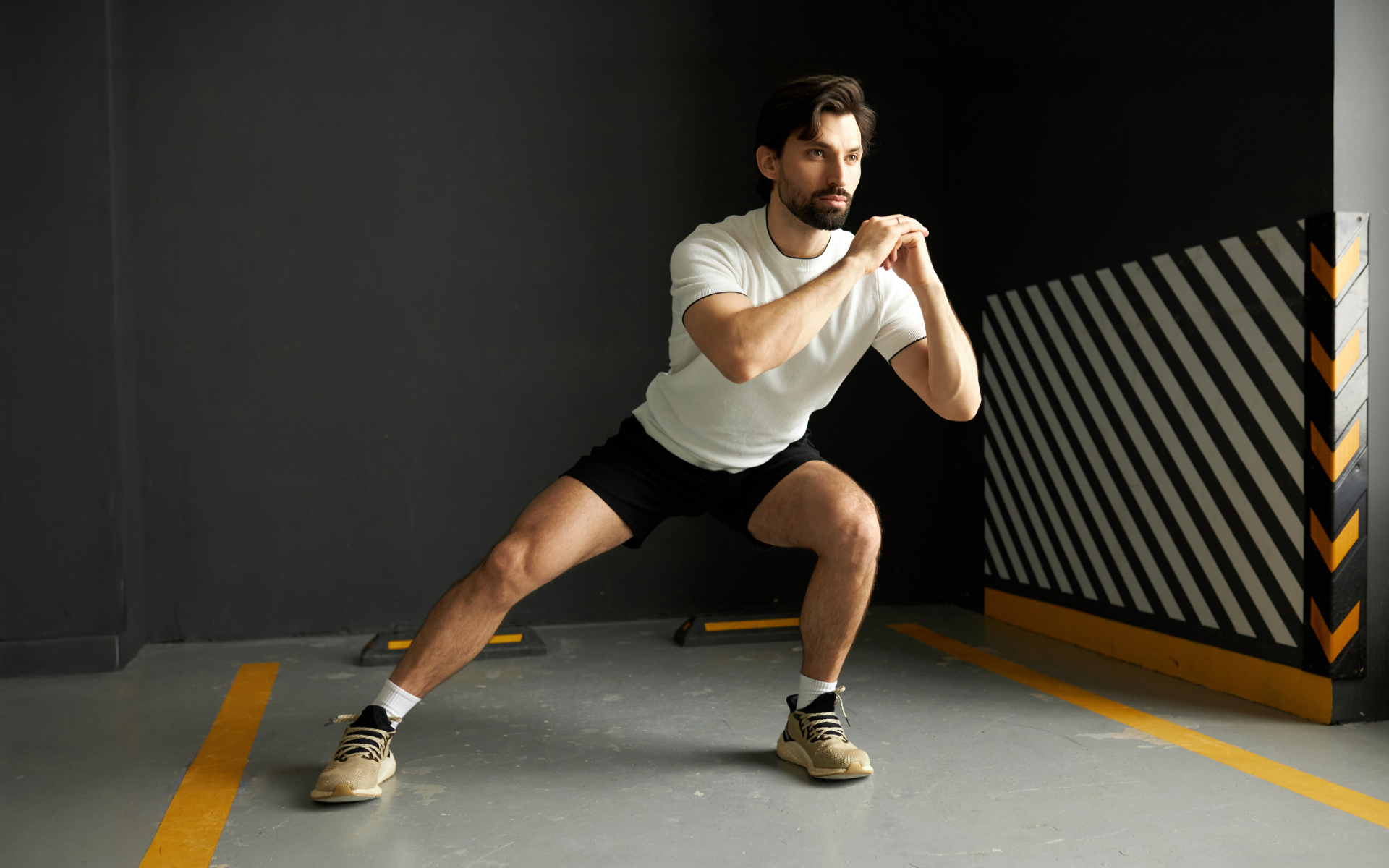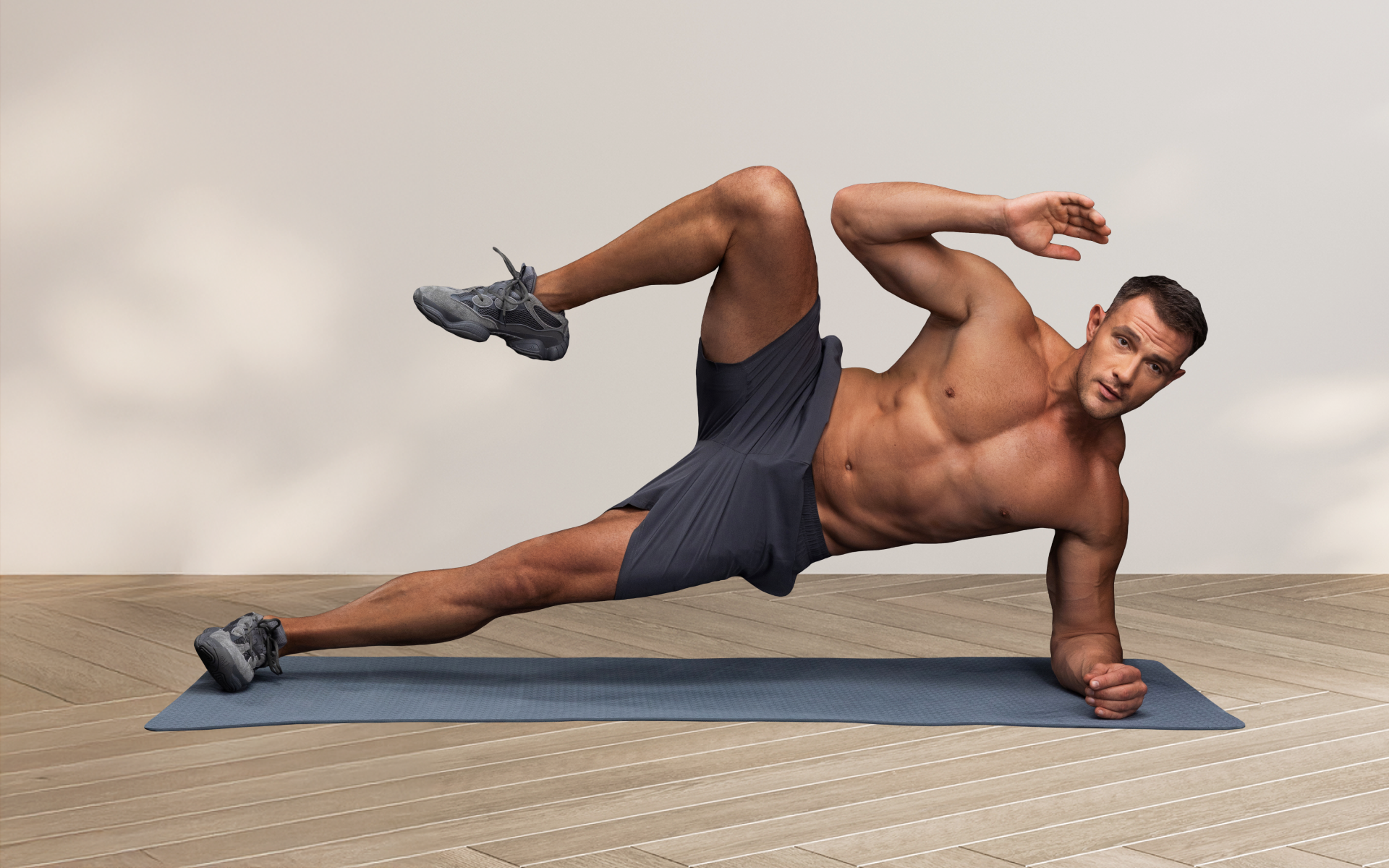Stepping into a gym for the first time can feel like entering a foreign world – machines you’ve never seen, exercises you’ve never tried, and a flood of advice from every direction. It’s easy to feel overwhelmed, unsure of where to start or how to make the most of your time.
However, here’s the good news: you don’t need to know everything on day one. What you do need is a clear, simple plan that’s tailored to your goals, your body, and your experience level.
In this post, we walk you through everything you need to know to lay a solid foundation for your fitness journey. From understanding the key exercises that should anchor your routine to tips on avoiding common mistakes, this article is designed to help you navigate the gym with confidence.
Let’s get started.
What Is a Workout Plan for the Gym and Why Is It Important?
A workout plan is essentially a roadmap for your fitness journey. It’s a structured outline that details what your gym sessions will look like and includes:
- Exercises
- Total number of sets and reps
- Rest periods
It serves as your guide to ensure each visit to the gym contributes meaningfully to your progress.
For gym beginners, a workout plan is particularly important as it provides clarity and direction at a time when everything feels new and overwhelming.
Instead of guessing which machines to use or how much weight to lift, a well-designed plan offers structure and eliminates confusion. Here’s why this is essential for both short- and long-term success:
Prevents Injuries by Promoting Proper Progression
One of the most common mistakes gym newcomers make is doing too much, too soon. Without a plan, it’s easy to overestimate your abilities, which can lead to poor technique or overexertion – both major risk factors for injuries.
A structured plan ensures you progress at a safe and realistic pace, allowing your body to adapt to new challenges gradually while minimizing the risk of strain or overuse injuries.
Optimizes Results Through Focused Effort
When you walk into the gym without a plan, you’re more likely to try random exercises or stick to what feels comfortable, which can hinder your progress.
However, a workout plan is purpose-driven. It helps you organize your workouts to help:
- Target specific muscle groups
- Balance your training routine
- Incorporate essential elements (strength, cardio, and mobility work)
This focus ensures every session contributes toward your goals efficiently and effectively.
Reasons why BetterMe is a safe bet: a wide range of calorie-blasting workouts, finger-licking recipes, 24/7 support, challenges that’ll keep you on your best game, and that just scratches the surface! Start using our app and watch the magic happen.
Builds Sustainable Habits and Confidence
Consistency is the foundation of any fitness transformation. By having a plan, you create a routine that’s easier to stick to over time.
Knowing exactly what to do reduces decision fatigue and helps you approach each session with confidence. Over time, this consistency creates physical results and reinforces the mental discipline that is needed for long-term fitness success.
Supports Recovery and Prevents Burnout
A good workout plan isn’t just about pushing your limits, it’s about balancing effort with recovery. Planned recovery can include several components, including;
- Rest days
- Mobility exercises
- Active recovery (1)
These elements help your body recover, repair, and grow stronger, which reduces the risk of overtraining and maintains your enthusiasm for the gym.
Read more: Beginner Upper-Lower-Full-Body Split: Exercises, Tips, and FAQs
How Do I Choose the Right Gym Workout Plan for My Goals?
Choosing the right gym workout plan can feel overwhelming, particularly when there are so many options available. To make the best choice, it’s important to focus on your unique needs, preferences, and lifestyle.
A workout plan isn’t just a set of exercises, it’s a strategy that’s tailored to your physical goals, current abilities, and long-term well-being. Here’s how to make a decision that works for you:
1. Define Your Goals
The first step is to identify what you want to achieve. For example, are you looking to:
- Build strength
- Lose fat
- Improve endurance
- Simply stay active
Your goals should drive the type of workout plan you choose. For example:
- Strength Training focuses on resistance exercises such as weightlifting
- Cardio-Based Plans prioritize activities such as running or cycling to improve stamina
- Hybrid Plans combine strength, cardio, and mobility for overall fitness
Having a clear goal helps you pick the right plan and keeps you motivated as you track your progress.
2. Assess Your Fitness Level
Starting where you are physically is essential. A plan that’s too advanced can lead to frustration or even injuries, while one that’s too basic may not challenge you enough. Look for a plan that is designed specifically for beginners if you’re just starting out, but make sure it offers opportunities for progression over time.
3. Consider Your Time Availability
Your schedule is a key factor in how practical a workout plan will be. Consider:
- Frequency – How many days per week can you realistically commit to the gym?
- Duration – How much time can you dedicate to each session?
A good workout plan will be aligned with your daily routine, ensuring consistency without creating additional stress.
4. Prioritize Recovery and Sustainability
An effective workout plan doesn’t just focus on the workouts, it balances effort with recovery. Make sure the plan includes rest days, active recovery, or lighter sessions to prevent overtraining.
Recovery isn’t just about physical health, it’s essential for sustaining motivation and avoiding burnout, particularly if you’re new to physical training (1).
5. Understand the Mind-Body Connection
A great workout plan does more than improve your physical fitness, it should also contribute to your mental well-being. Choose plans that encourage mindfulness, focus, and a positive mindset. This may involve incorporating:
- Stretches
- Breathing exercises
- Mobility work
Together, these activities can enhance relaxation and mental clarity.
6. Keep It Flexible
Your fitness goals and needs may evolve over time. A well-designed plan allows for adjustments as you progress, making sure it continues to challenge you without becoming overwhelming.
Flexibility also comes in handy if you encounter unexpected changes in your schedule or energy levels.
How Many Days a Week Should a Gym Workout Plan Include?
For gym beginners, 3-4 days of well-structured workouts is typically ideal – enough to see progress without overwhelming the body (2).
However, the ideal number of gym sessions per week depends on several factors such as:
- Fitness goals
- Current experience level
- How well your body recovers from exercise
Striking the right balance between effort and recovery is essential for making consistent progress while avoiding burnout or injury.
Consider these factors to determine the optimal training frequency for your needs.
What Are Your Goals?
Your training frequency should correspond to what you’re trying to achieve:
- Muscle Gain (Hypertrophy) often requires 3-5 days of strength training per week to effectively target all major muscle groups (3).
- Fat Loss or General Fitness can range between 3-6 days, combining cardio and resistance training for variety and calorie burn (4).
- Endurance Building typically involves several moderate or high-intensity cardio sessions, spread effectively across 4-6 days (5).
- Rehabilitation or Recovery emphasizes lower workout frequencies, such as 2-3 days, combined with mobility or light activity (1).
Having clarity about your goals sets a clear benchmark for how often you should train.
Account for Your Fitness Level
Beginner and advanced gym-goers differ in terms of recovery capacity and adaptation rates (2):
- Beginners benefit most from 2-4 sessions per week, allowing sufficient recovery between workouts as the body adjusts to new demands.
- Intermediate Trainees (with 6 months to a year of experience) can often handle 4-5 sessions weekly, enabling them to explore specialized plans.
- Advanced Trainees with robust recovery systems may train 5-6 days if desired by managing training volume carefully.
If you’re new to the gym, remember that quality always matters more than quantity. Start slow and focus on consistency.
Understand the Impact of Training Volume
Training frequency is just one piece of the puzzle – training volume, or the total number of sets and repetitions in a session, also matters.
Fewer weekly sessions with higher volume (per workout) may work for some, while others thrive on more frequent, shorter sessions (2).
For example:
- A split routine may target specific muscle groups on different days over 5 sessions.
- A full-body program may focus on compound exercises 3 times a week with fewer total sets per day.
Choose based on what fits your schedule and energy levels – both options can be effective with proper planning.
Account for Recovery Time
Recovery is the foundation of all progress. Your body grows stronger and adapts during rest, not while working out. Training too frequently without allowing adequate recovery can lead to overtraining syndrome, mental fatigue, and even injuries (6). Factors that influence recovery include:
- Sleep Quality – Aim for 7-9 hours of quality sleep.
- Nutrition – Fuel your muscles with sufficient protein, carbohydrates, and healthy fats.
- Stress Levels – Balance workouts with mindfulness and stress management techniques.
For most beginners, training every other day, or 3-4 times per week, paired with active recovery (such as walking or stretching), is a sustainable rhythm.
Listen to Your Body
Training isn’t static – life happens, and your energy levels will naturally fluctuate. Pay attention to fatigue, soreness, and motivation:
- If you’re feeling drained, reduce frequency or incorporate additional rest days.
- If progress stalls or you feel sluggish, reevaluate your recovery, nutrition, and sleep.
Adjusting your workout plan to suit your needs ensures you maintain a sustainable and enjoyable routine.
Should I Split Workouts by Muscle Groups or Do Full-Body?
Both split routines (where you train different muscle groups on different days) and full-body workouts (where you train most major muscles each session) have distinct benefits (7). The right choice depends on your goals, experience, and recovery needs.
Full-body workouts are particularly effective for beginners. They allow you to practice foundational movements multiple times a week without overloading any one muscle group.
This approach helps you build balanced strength, improve movement patterns, and recover adequately between sessions. Training the full body two to three times per week is often sustainable and supports consistent progress.
Split workouts are more commonly used by intermediate or advanced lifters, or by those with very specific aesthetic or performance goals. By targeting fewer muscle groups per session, you can increase training volume and intensity for each area.
For example, a “push/pull/legs” split lets you dedicate entire sessions to related movement patterns or muscle groups. This method is best when you can commit to more days in the gym and your body has adapted to heavier training loads.
When deciding which to use, you should consider:
- Your Experience Level: Beginners benefit from full-body routines – as you gain experience, a split routine may offer more targeted results.
- Time Commitment: Those with limited weekly gym time often make better progress with full-body sessions.
- Recovery: Full-body training naturally spaces out muscle group recovery, while splits may require more attentive scheduling of rest days.
Ultimately, both methods can be effective. There are no strict rules – you may choose to experiment with either style to find what works best for your body and goals.
How Long Should Each Gym Workout Session Last?
For most people, an effective gym workout session lasts between 45 and 75 minutes. This range covers enough time to warm up, complete your planned exercises with focus, and cool down properly without leading to diminishing returns from fatigue or loss of concentration.
- Shorter sessions (around 30-45 minutes) may suit those who are focusing on high-intensity circuits or a minimalist program.
- Longer sessions (up to 75 minutes) can include more complex training such as strength work, mobility, and extra cardio.
The key is quality, not quantity. Aim to keep your sessions purposeful, maintain good form, and prioritize rest between sets where needed.
Keep in mind that the effectiveness of a session is ultimately measured by how well it is aligned with your goals and fits into your schedule long-term. Overly long workouts can actually increase fatigue, raise injury risk, and make consistency harder to maintain.
What Is a Balanced Workout Plan for the Gym?
A 4-day upper/lower split is an excellent way for beginners to balance effort, recovery, and skill development. You’ll do two “upper-body” days and two “lower-body” days, ideally with a rest or light activity day in between.
Weekly Structure:
- Day 1: Upper body
- Day 2: Lower body
- Day 3: Rest or active recovery
- Day 4: Upper body (repeat Day 1)
- Day 5: Lower body (repeat Day 2)
- Days 6 and 7: Rest, mobility, or light cardio
Upper-Body Workout
- Bench Press: 3 sets x 8-10 reps (rest 90 secs)
- Lat Pulldown: 3 sets x 10-12 reps (rest 90 secs)
- Seated Row: 3 sets x 10 reps (rest 60-90 secs)
- Dumbbell Shoulder Press: 3 sets x 8-10 reps (rest 90 secs)
- Dumbbell Curl: 2 sets x 12 reps (rest 60 secs)
- Triceps Rope Pushdown: 2 sets x 12 reps (rest 60 secs)
BetterMe: Health Coaching app helps you achieve your body goals with ease and efficiency by helping to choose proper meal plans and effective workouts. Start using our app and you will see good results in a short time.
Lower-Body Workout
- Bodyweight Squat or Goblet Squat: 3 sets x 10-12 reps (rest 90 secs)
- Romanian Deadlift: 3 sets x 10 reps (rest 90 secs)
- Leg Press or Step-Up: 3 sets x 10 reps (rest 90 secs)
- Calf Raise: 2 sets x 15 reps (rest 60 secs)
- Plank: 2 sets x 30-45 secs hold (rest 45-60 secs)
Note: Always start each session with a 5-10-minute dynamic warm-up.
Exercise Guide
Bench Press
The bench press primarily works the chest (pectoralis major), shoulders (anterior deltoid), and triceps. It’s a compound, push-based movement that requires coordinated upper-body pressing strength.
How to perform:
- Lie flat on a bench with your feet flat on the floor.
- Grip the bar wider than shoulder-width, unrack it, and lower under control to chest level.
- Press the bar upward until your arms are extended, avoiding locking your elbows.
- Lower and repeat.
Lat Pulldown
Targets the upper back (latissimus dorsi), biceps, and shoulder stabilizers. This pull-based movement builds strength for pull-ups and improves posture.
How to perform:
- Sit at the machine, grasp the bar with a grip just wider than your shoulders.
- Pull the bar down toward your upper chest, squeezing your shoulder blades.
- Control the weight as you slowly return it to the top.
- Repeat.
Seated Row
Works the mid- and upper back (rhomboids, traps) and biceps. It reinforces balanced shoulder muscle development.
How to perform:
- Sit upright at the row machine with your feet on the platform.
- Grasp the handles, keeping your chest tall and your back straight.
- Pull the handles to your torso, squeezing your shoulder blades together.
- Return slowly to the start.
Dumbbell Shoulder Press
Engages the shoulders (deltoids), triceps, and upper back. This overhead motion challenges core stability.
How to perform:
- Sit or stand with dumbbells at shoulder height.
- Press both overhead, extending your arms but not locking your elbows.
- Slowly lower back to the start.
Dumbbell Curl
Isolates the biceps, a key flexor of the elbow joint.
How to perform:
- Stand with dumbbells at your sides, with your palms facing forward.
- Curl the weights up and keep your elbows stationary until your forearms are vertical.
- Lower to the start under control.
Triceps Rope Pushdown
Targets the triceps, which helps develop arm strength for pushing exercises.
How to perform:
- Stand at a cable machine with a rope attachment.
- Grip the rope with your palms facing in and your elbows tucked.
- Push the rope downward, splitting the ends apart at the bottom.
- Return slowly.
Bodyweight Squat or Goblet Squat
Engages the quadriceps, glutes, and core stabilizers. Squats mimic natural movement and build foundational lower-body strength.
How to perform:
- Stand with your feet shoulder-width apart and hold a dumbbell at your chest (goblet squat).
- Lower your hips back and down, your knees tracking your toes.
- Descend until your thighs are at least parallel to the floor.
- Press up through your heels to stand.
Romanian Deadlift
Emphasizes the hamstrings, glutes, and lower back via a hinge movement pattern.
How to perform:
- Stand with your feet hip-width apart, holding dumbbells or a barbell.
- Hinge at your hips with a slight knee bend and lower the weights to mid-shin.
- Keep your back straight and your core braced.
- Return to standing by driving your hips forward.
Leg Press or Step-Up
Both exercises challenge the glutes, quads, and hamstrings. Leg press offers support, while step-ups train balance and coordination.
Leg Press Steps:
- Sit with your feet shoulder-width apart on the platform.
- Press out to extend your knees – avoid locking out.
- Lower the sled with control.
Step-Up Steps:
- Stand facing a sturdy bench, holding dumbbells at your sides.
- Step up with one leg and press through the heel to stand tall.
- Lower and alternate legs.
Calf Raise
Builds calf strength for walking, running, and stability.
How to perform:
- Stand upright with your feet hip-width apart and your toes forward.
- Rise onto the balls of your feet and pause at the top.
- Lower back down slowly.
Plank
A core stability exercise that uses the abdominals, glutes, and shoulders.
How to perform:
- Place your forearms on the ground with your elbows under your shoulders.
- Extend your legs, forming a straight line from your head to your heels.
- Hold this position, bracing your entire core.
When and How Should I Change My Gym Workout Plan?
It’s advisable – and wise – to update your workout plan periodically. Most beginners benefit from sticking with a basic plan for at least 6-8 weeks (8). This timeframe allows the muscles, joints, and nervous system pathways to adapt, leading to measurable progress.
Signs that it’s time for a change include:
- Reaching a plateau, where strength or endurance stops improving
- Growing bored or unmotivated with your current routine
- Noticeable decrease in results, even with consistent effort
When you update your plan, focus on these strategies:
- Adjust exercise selection (swap in new movements or equipment)
- Change the order or structure of your workout (e.g. from full-body to split routines)
- Modify intensity through more sets, reps, or added resistance
- Incorporate new training methods, such as circuits or supersets, for variety
Always introduce changes gradually. Give your body a chance to adapt and monitor how you feel. The goal is to keep challenging yourself, not to overhaul your entire routine at once. If you’re curious about the home gym workout plan, check out our earlier article.
Read more: 7 Exercises For A V-Shape Back Workout With Dumbbells
How to Increase Intensity in a Gym Workout Plan Safely
Increasing the intensity is an important part of ongoing progress, but it must be approached carefully to minimize injury risk and support recovery. The best ways to boost intensity include:
- Progressive Overload: Gradually increase the weight, number of repetitions, or total sets for each exercise.
- Shorten Rest Intervals: Decrease rest time between sets to heighten cardiovascular demand, as long as your form remains strong.
- Add Advanced Techniques: Include supersets, drop sets, or tempo changes (such as slowing the lowering phase) once you master the basics.
- Increase Exercise Complexity: Progress from machines to free weights, or incorporate multi-joint (compound) movements.
Before you increase the intensity, make sure your technique is solid and that you’re recovering well from current workouts. Listen to your body: pain, prolonged soreness, or fatigue are signs that you need to slow down or seek guidance. Remember, sustainable improvement comes from small, consistent advances, not drastic, overwhelming changes.
A certified trainer can help you learn the proper technique, customize your plan, and reduce your risk of injury, particularly when you’re new to the gym. However, with reliable resources and a willingness to learn, it’s also possible to start with a well-designed beginner plan on your own. Sticking with the same plan for an extended period can lead to plateaus as your body adapts to repetitive stress. It’s recommended to make small changes, such as adjusting exercises, sets, or intensity, every 6 to 8 weeks to continue challenging your muscles and support ongoing progress. Dive deeper into the 12-week workout plan with our dedicated article. Track your progress by recording sets, reps, and weights for each exercise in a workout journal or app. In addition, monitor performance milestones (first push-up, heavier squat, faster run), measure body composition, or take progress photos periodically for a broader picture of your development. Rest days are essential for muscle repair, nervous system recovery, and injury prevention. Consistent training without sufficient rest increases the risk of overtraining syndrome, fatigue, and setbacks. For best results and long-term growth, always include rest or active recovery days in your plan.Frequently Asked Questions
Do I need a trainer for a gym plan?
Can I do the same gym plan long-term?
How can I track my progress in a workout plan for the gym?
Is it okay to skip rest days in a gym plan?
The Bottom Line
A workout plan doesn’t need to be complicated to be effective. Its primary purpose is to give your efforts direction, ensuring each rep and set is part of a bigger picture. For gym beginners, it’s your best tool for building a strong foundation – physically and mentally. By starting with a well-thought-out plan, you’re learning how to exercise and how to train with intention, safety, and purpose.
DISCLAIMER:
This article is intended for general informational purposes only and does not serve to address individual circumstances. It is not a substitute for professional advice or help and should not be relied on for making any kind of decision-making. Any action taken as a direct or indirect result of the information in this article is entirely at your own risk and is your sole responsibility.
BetterMe, its content staff, and its medical advisors accept no responsibility for inaccuracies, errors, misstatements, inconsistencies, or omissions and specifically disclaim any liability, loss or risk, personal, professional or otherwise, which may be incurred as a consequence, directly or indirectly, of the use and/or application of any content.
You should always seek the advice of your physician or other qualified health provider with any questions you may have regarding a medical condition or your specific situation. Never disregard professional medical advice or delay seeking it because of BetterMe content. If you suspect or think you may have a medical emergency, call your doctor.
SOURCES:
- EXPLORING THE SCIENCE OF RECOVERY (n.d., blog.nasm.org)
- A Systematic Review of the Effects of Different Resistance Training Volumes on Muscle Hypertrophy (2022, jhk.termedia.pl)
- Loading Recommendations for Muscle Strength, Hypertrophy, and Local Endurance: A Re-Examination of the Repetition Continuum (2021, mdpi.com)
- Effect of weekly physical activity frequency on weight loss in healthy overweight and obese women attending a weight loss program: a randomized controlled trial (2016, sciencedirect.com)
- FITT Principle (n.d., physio-pedia.com)
- The Importance of Recovery in Resistance Training Microcycle Construction (2024, pmc.ncbi.nlm.nih.gov)
- Split or full-body workout routine: which is best to increase muscle strength and hypertrophy? (2021, pmc.ncbi.nlm.nih.gov)
- Neuromuscular adaptations to strength training (n.d., us.humankinetics.com)
